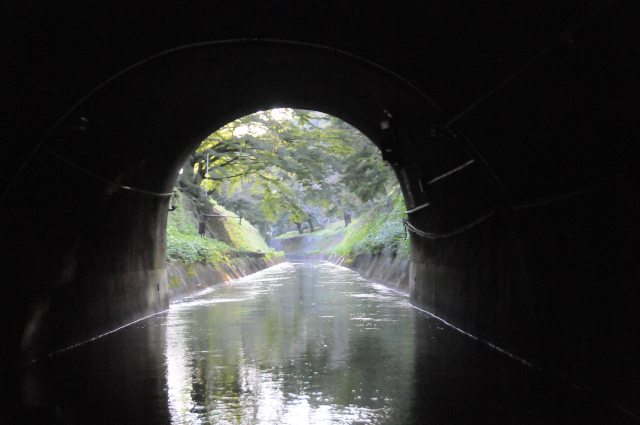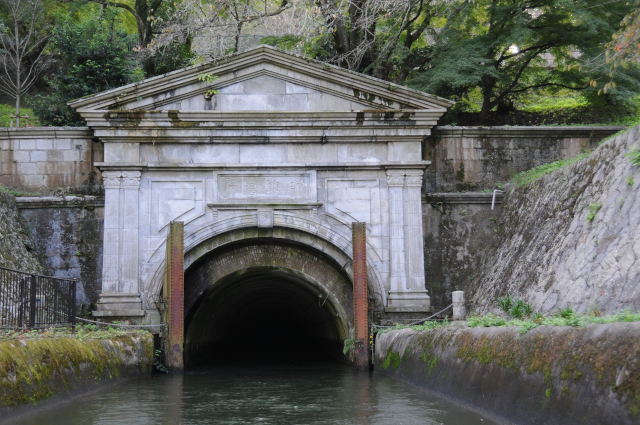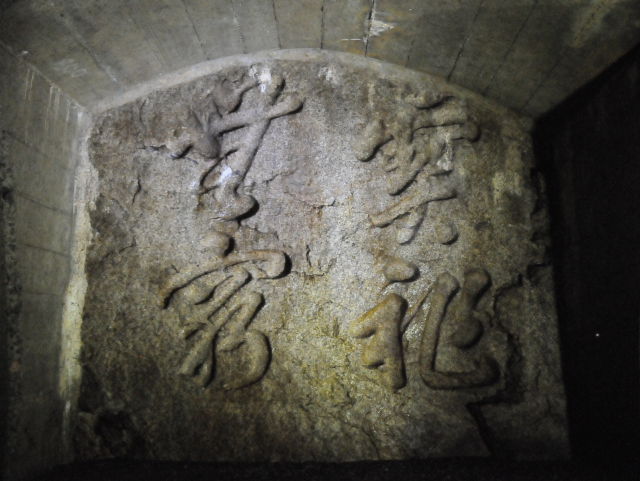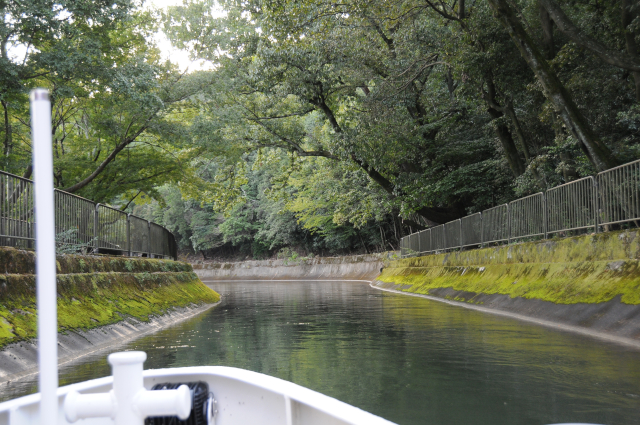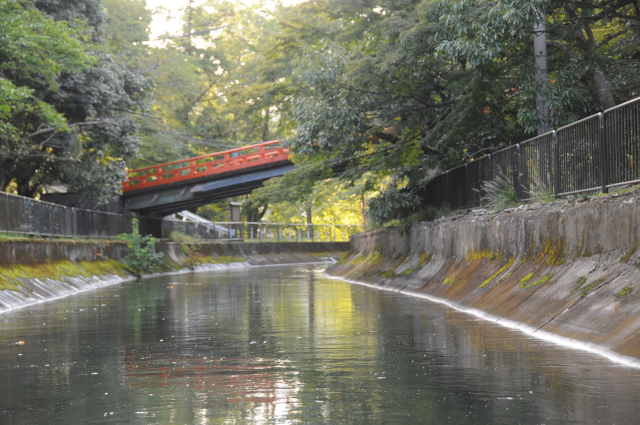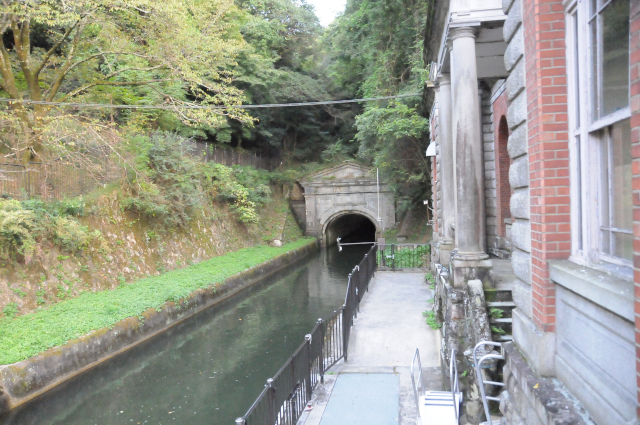Since renovations and other things are moving quite fast at the moment, and I don’t want to bore you with a super long post on Wednesday, I’ll give you two weekly posts instead for the foreseeable future. Aren’t you just thrilled to hear more about my renovations! 😉
This post is all about tatami. For those of you who don’t know, tatami are the mats that are used in traditional Japanese rooms. They are nothing more than rice straw sewn together and covered with woven (soft or common) rush on the top. The edges on the long side are usually covered with fabric, often brocade. Tatami are typically 5-6 cm thick and twice as long as wide. Exact measurements depend on the region.
Traditional tatami like these are quite expensive. You can now get cheaper options with for example a styrofoam core in the middle, with also cuts down on the weight. Still, to this day, tatami are mostly made of natural materials, which makes them quite delicate. The most dangerous enemy of any tatami is water, which can seep through the rushes on top and damage the rice straw directly or cause mould in the long run. I have seen people rush home during a thunderstorm just to close their windows and protect their tatami.

When tatami get old, they turn a warm yellow colour. The longer they are in use, the more the surface gets scuffed and worn, even though nobody in Japan would ever enter a washitsu (traditional Japanese room with tatami) with anything else than socks. As you can see in the image above, the rushes get worn out eventually, often starting at the edges (the light-yellow colour).
Last week, my tatami were measured for replacement. Interestingly, the sizes of tatami differ according to the Japanese region you live in. The Kyoto tatami have the largest size – 0.955 m by 1.91 – they are called kyoma tatami (literally: Kyoto room). The edoma from Tokyo are significantly smaller – 0.88 m by 1.76 m – and the size in Nagoya lies in between.
Interestingly, I have edoma tatami in my house that are not entirely uniform in size. I have only measured a few, but they were all between 0.86 and 0.88 m wide and from 1.76 to 1.79 m long. In any case, they were removed last Friday to expose the underflooring, which looks like this:

Yes, that’s quite normal, it’s a wooden house, remember. Actually, this is a very good underflooring; a friend of mine lives in a house from roughly 100 years ago. There are gaps between the floor boards that are 2-3 cm wide, and that’s on the ground floor, without any insulation against the cold!
In fact, Japanese houses were and still are built as airy and breezy as possible to make the summer heat more bearable. Every little gap where some puff of air can come through helps in this respect. And as I have mentioned before, the Japanese seem to be less concerned about the cold in the winter than about the humid summers…
As you can see, there are still parts of the rush covering lying around, and in fact, I was quite surprised how dirty the room was. I guess there’s a lot of dust and other dirt that can fall through the cracks of the tatami over the years. I’m not sure if there’s a solution for this – other than meticulous regular cleaning, that is.
Anyway, I went to the house today, just in time to see the finishing touches put onto my brand-new tatami. Sadly, I was too late to see what they put underneath them, there was talk about an insect-repellent sheeting or something. As you can see below, the rush is still green, and they do smell so lovely and new! I have ordered blue borders that look good now and will go well later with the mature yellow too, and I’m very pleased with the effect.
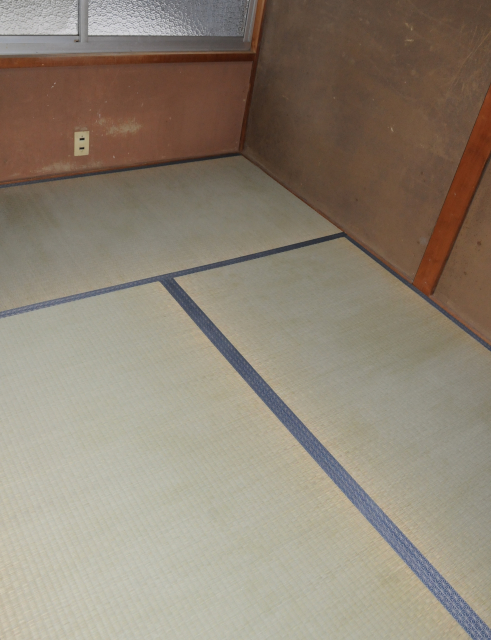
The contractor has informed me that the rush surface has been treated with some wax or chemical or something. I will have to wipe this layer off with a dry cloth and repeat this three or four times, otherwise it will come off on my socks when I walk on them.
It’s not really obvious in the image above, but there is indeed some sort of white waxy layer on top; the craftsmen installing them showed me how to clean them (wipe with the grain of the rush covering) and they turned even greener than they are now. The craftsmen also told me to keep the windows open for a while, as long as it can’t rain into the rooms. Well, I’ll be at the house every day this week anyway to get some other things done, so that’s not a problem.
I really love how this simple upgrade has changed the feeling of the rooms upstairs. They look so much cleaner and neater, even though I haven’t done anything else. I don’t have the money to make other, more significant improvements to the rooms upstairs, but as I said, they are mostly in working order. I will replace the paper of the shoji at the windows though, that seems to be an easy DIY-fix even I can attempt – and write about.
Fun fact of the day: There are no light switches on the second floor. Not one. All the ceiling lamps are turned on/off by pulling a cord that hangs down from them. I didn’t even notice this until I tried to get some light for my photos today. It is definitely an interesting choice I have to get used to…





